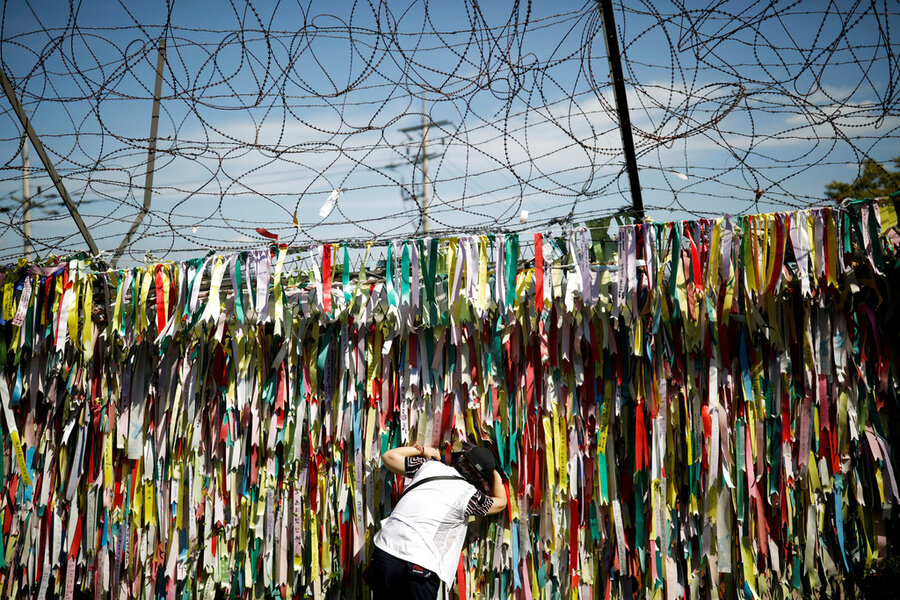What to think of North Korea on Peace Day
Loading...
A common predictor of war is whether enough people expect one. A new Gallup poll, for example, finds 58 percent of Americans support military action against North Korea if economic and diplomatic efforts fail to end its nuclear threat. That figure is up from 47 percent in 2003. Such polling, however, is enlightening for two reasons. It presumes the public might have a say on whether a conflict breaks out. And it focuses more on the possibility of warmaking than on peacemaking.
A bias has long existed in international affairs to look at the likelihood of a conflict breaking out, a sort of fear-based model of analysis that presumes peace is merely the absence of war and that people can be led by fear. Much of the analysis thus looks at “negative drivers” for war, such as a country’s economic and social fragility or a national leader’s desire to stay in power. Experts on North Korea, for example, debate the worst aspects of the regime in Pyongyang, such as its irrational behavior, and whether those factors will lead to nuclear conflict.
The reverse type of analysis receives far less attention. “There is little data and evidence on positive drivers, or ‘positive interrupters’ or ‘resilience,’ ” states the Institute for Economics & Peace in a new report about methods used to assess the risks of war. This bias toward negative factors results in missed opportunities for peace, the report concludes.
It was because of such bias that the United Nations acted in 1981 to designate International Peace Day, which will again be celebrated on Sept. 21. (In 2001, the General Assembly voted for the day to be used for cease-fires.) The annual celebration presumes peace is not only attainable but that it is an activity that should include everyone, not only politicians and diplomats.
A global momentum to focus more on peacemaking made a big step last year when the Security Council and General Assembly embraced the concept of “sustaining peace” in many UN initiatives. One of the universal goals of the 2030 Agenda for Sustainable Development is to “promote peaceful and inclusive societies....”
In addition, the UN’s new secretary-general, António Guterres, came into office this year saying everyone must be mobilized for peace and preventive diplomacy. He proclaimed that war is not inevitable and that conflict prevention will be the priority of the UN.
He might also have said that the best predictor of peace lies in having enough people expect it. That confidence, if better researched and highlighted, could result in a tangible reality for people in countries presumed to be on the verge of conflict.







